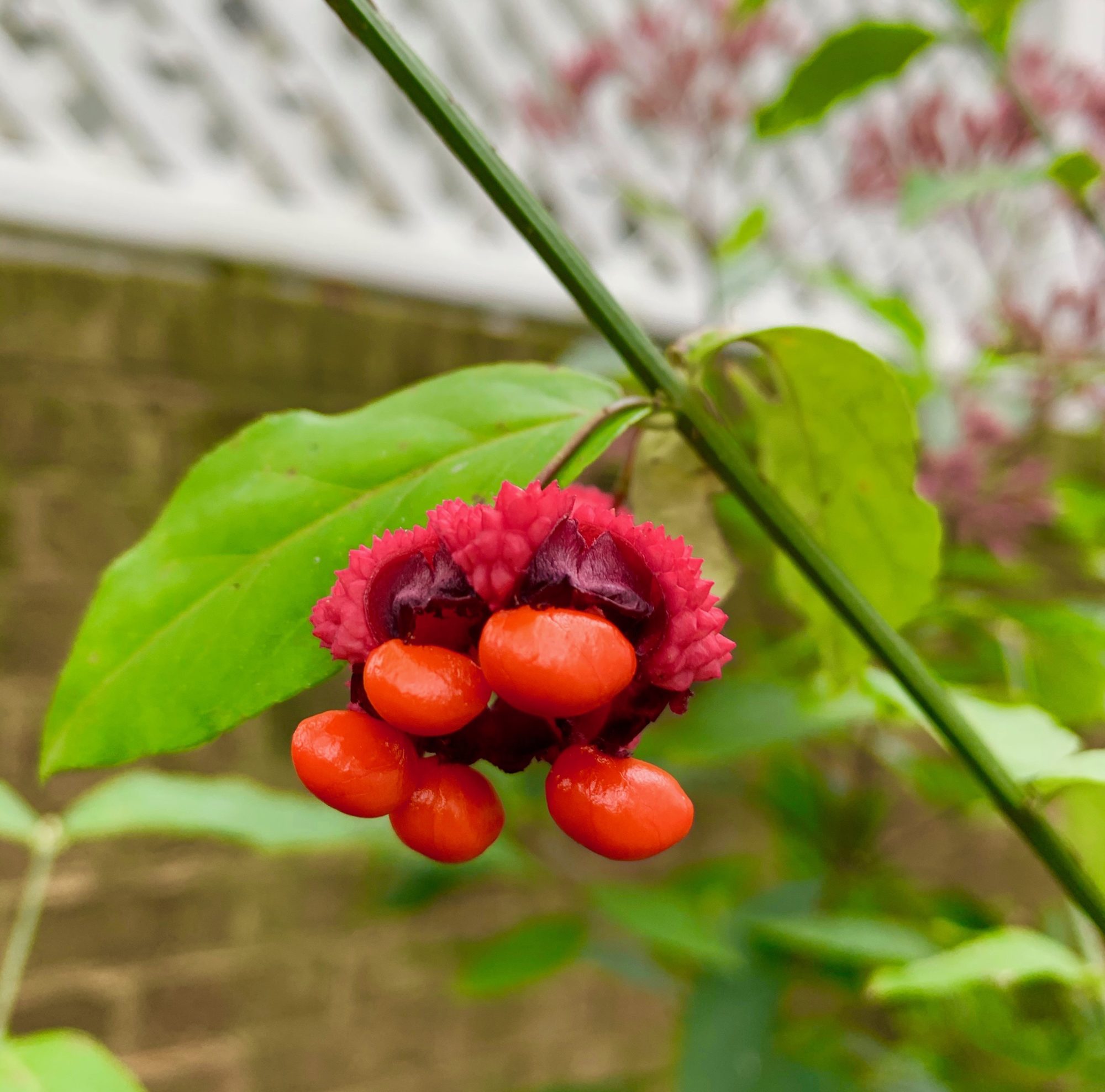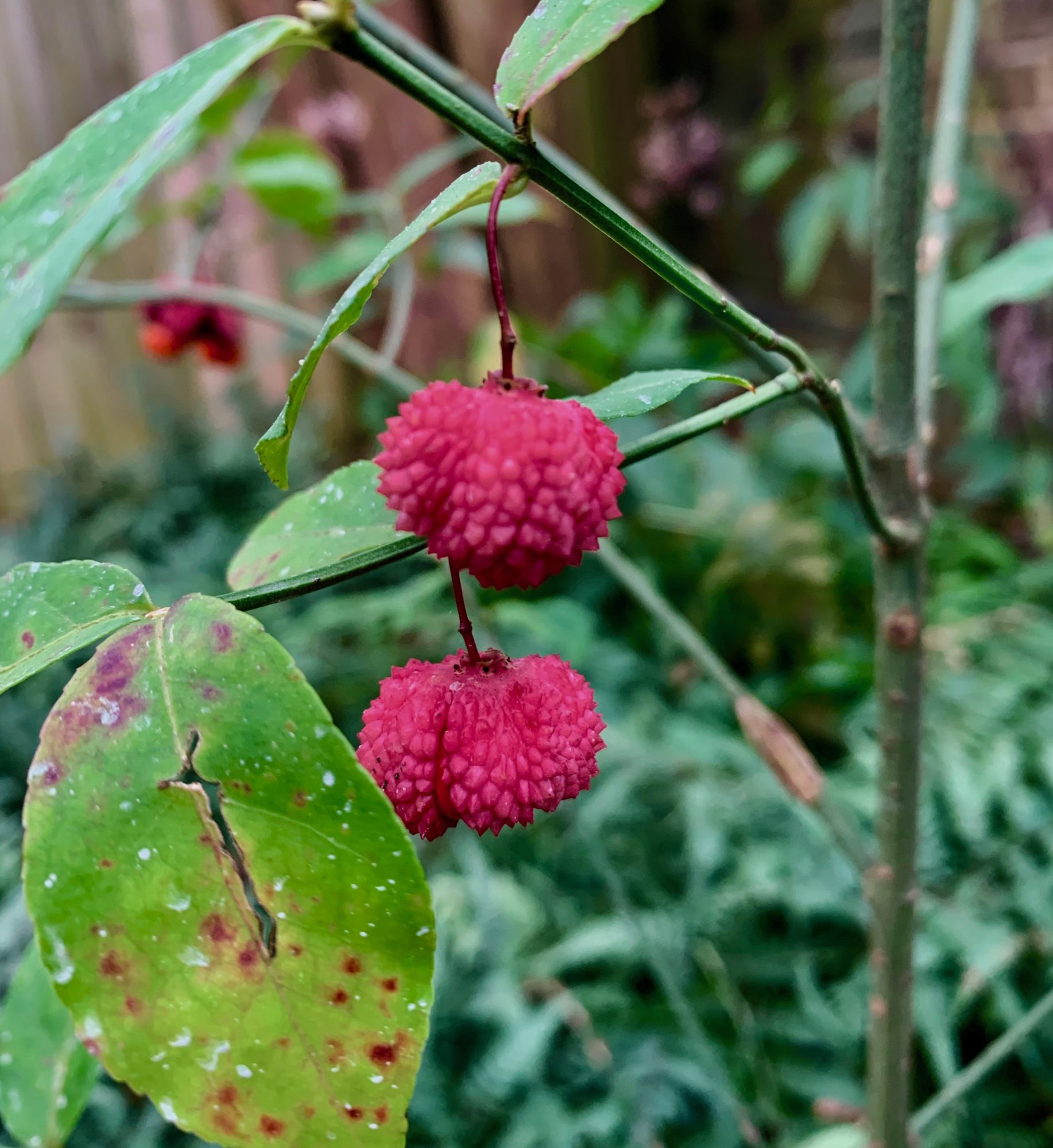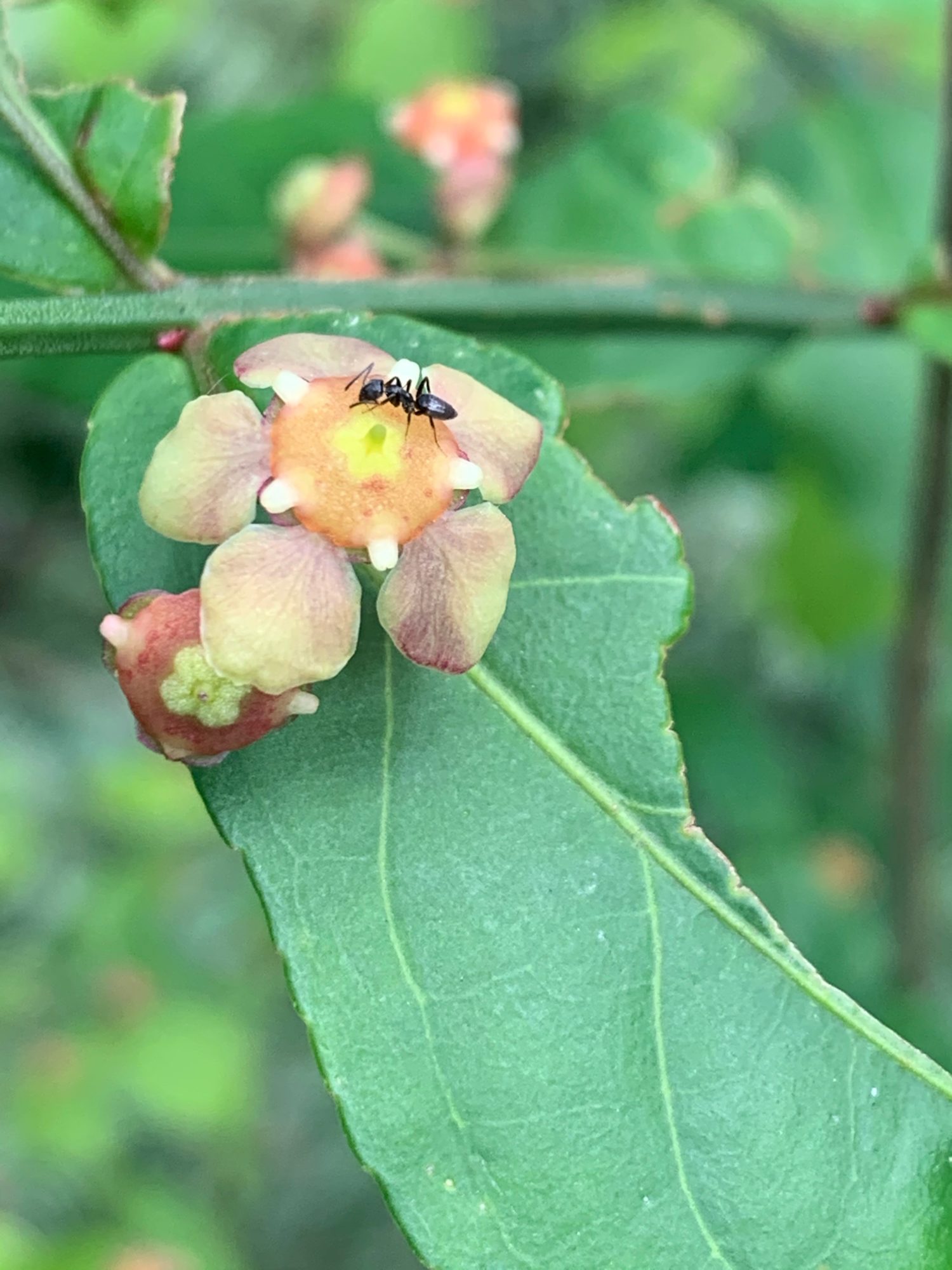by Mary Reid Barrow
There’s a little shrub that’s breaking hearts in woodland areas along the coast this time of year, if you are lucky enough to see it.
Its cherry red seed pods have popped open to reveal shiny red-orange seeds. Both pods and seeds are so bright that if you should by chance come across this otherwise non-descript shrub, your heart would melt.
It’s called American strawberry bush, (Euonymus americanus) in the books, but I don’t think the fruits look like strawberries at all. When the pods burst open and the showy red seeds are bright against a purple background, hearts a bursting is the only name that really fits. Nothing else could describe it and hearts-a-bursting is the only name I’ve ever known for it:

Even earlier as the fruits ripen, they don’t look like strawberries to me. They look just like plump raspberries with the prettiest raspberry color ever:

This native grows in the forest understory in semi-shade and likes moist soil, though it can tolerate sun and dry conditions. I have occasionally seen it along the trails in First Landing State Park, but you have to keep your eyes peeled.
I really began to know hearts-a-bursting when someone gave me a small bush several years ago and I have watched it year round. It indeed captured my heart.
I had to nurse it along. It took several years for it to bloom and do its wonderful fall display. Now I look forward to it every year in September and early October. Little bush, every time you break your hearts, you break one more too–mine!
Some gardeners say they don’t care much for hearts-a-bursting because other than its glory moment in the fall, it doesn’t offer much to the landscape. I love its pale yellow-ish spring blooms but you have to be up close to see them. They are interesting and pretty, but tiny. The little ant on the flower gives a sense of size.

The green leaves are nondescript. though they turn reddish-yellow in the fall. I’ve read that the bare stems turn a purplish hue in winter but I haven’t seen that. My hearts-a-bursting is still small and bushy. The shrubs can grow over 10 feet tall and as they grow, they become more tree-like and erect. A tall hearts-a- bursting with purple branches could be striking looking in winter.
Not only do tiny ants nectar on the spring flowers, birds eat the berries in fall. And so do small mammals. But for me, once my bush produces its wonderful red seed pods, it’s all I need and my heart’s a- bursting too.
Do you have a favorite tree or plant with a story to tell? What relationships have you observed between plants and critters? Who eats whom? Who has babies where? Send an email to maryreid@lrnow.org